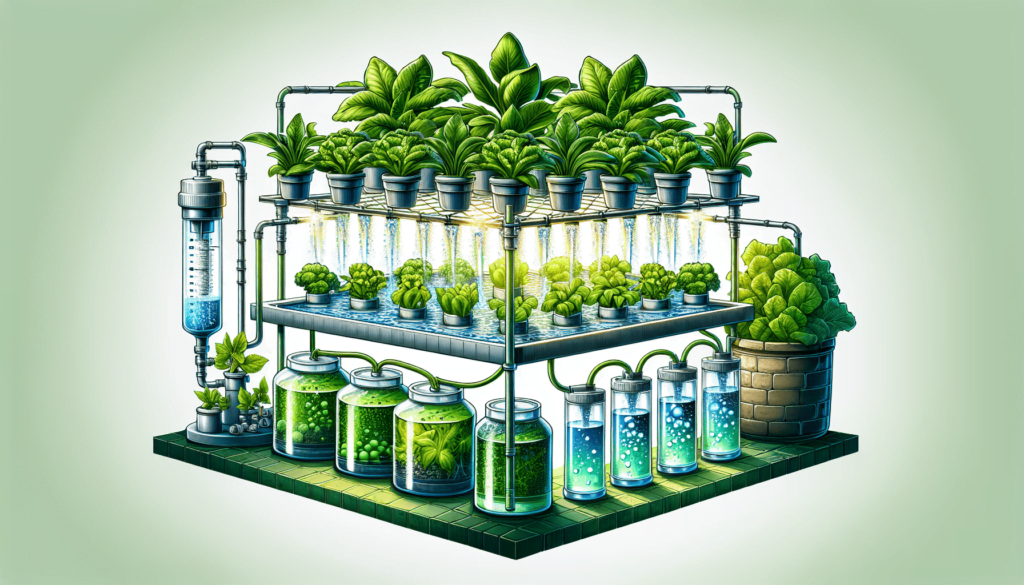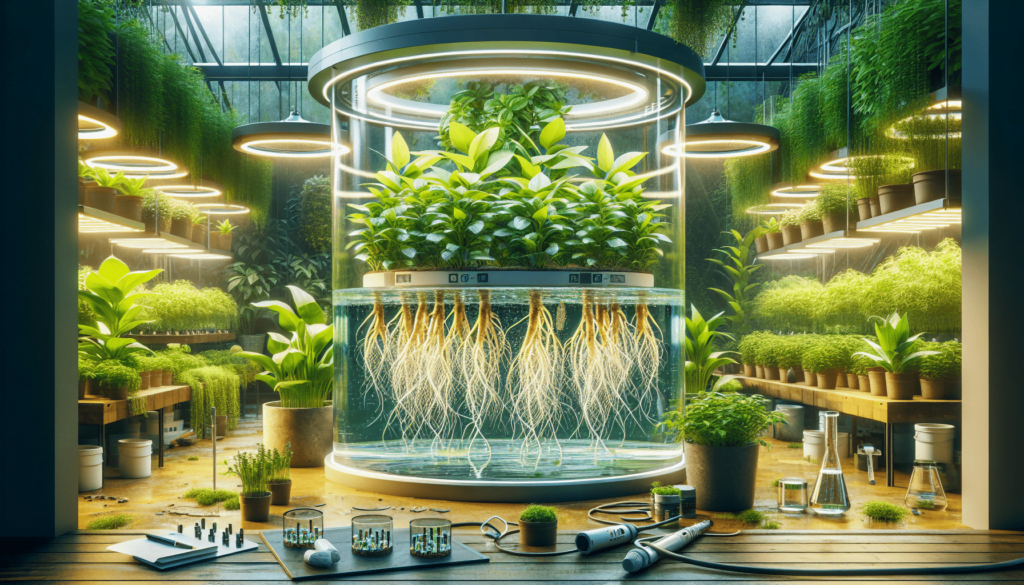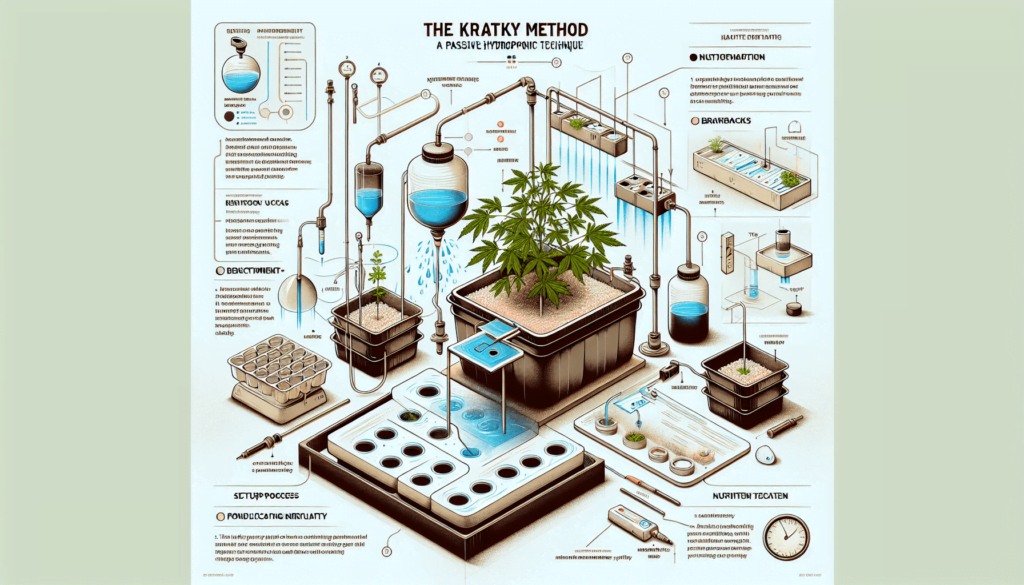Picture this: you’re a home gardener, excited about the idea of growing your own fresh produce using hydroponics. You’ve done your research, gathered your supplies, and now you’re faced with a crucial decision: what container should you use? Mason jars seem like a popular choice, but are they really the best option? In this article, we’ll explore the pros and cons of using mason jars for hydroponics. From convenience and affordability to potential drawbacks, we’ll dive into it all. So, before you grab that mason jar and start growing, let’s weigh the advantages and disadvantages together and find out if they’re the right fit for your hydroponic journey.
Benefits of Using Mason Jars for Hydroponics
Hydroponics is gaining popularity among home gardeners for its ability to grow plants without soil. While there are several hydroponic systems available, using mason jars for hydroponics offers unique advantages that make it a cost-effective and accessible option for both beginners and experienced gardeners alike. Let’s explore the benefits of using mason jars for hydroponics in detail.

Cost-Effective and Accessible
One of the biggest advantages of using mason jars for hydroponics is their affordability and accessibility. Mason jars are readily available in most households or can be easily purchased at an affordable price. You don’t have to invest in expensive equipment or systems, making it a cost-effective option for those on a budget.
Versatility and Customization
Mason jars offer tremendous versatility and customization options for your hydroponic setup. You can choose from various sizes and shapes, allowing you to accommodate different plant varieties. Whether you want to grow herbs, leafy greens, or colorful flowers, mason jars can be adapted to meet your specific needs.
Additionally, you can easily customize the setup to suit your space constraints. Mason jars can be placed on window sills, shelves, or even hung vertically for a space-saving solution. This flexibility makes them ideal for small apartments or urban dwellings where space may be limited.
Sustainable and Eco-Friendly
In today’s world, sustainability and eco-friendliness are crucial considerations for any gardening method. Mason jars align with these values, as they are reusable and promote waste reduction. By using mason jars for hydroponics, you reduce the need for single-use plastic containers, contributing to a greener and more sustainable environment.
Furthermore, hydroponics systems inherently use less water than traditional soil-based gardening. Mason jar hydroponics further enhance this water efficiency, as the closed system prevents water evaporation and keeps the roots constantly hydrated. This sustainable approach ensures that you can grow plants guilt-free while conserving precious resources.
Visual Appeal and Aesthetics
Who says gardening can’t be visually appealing? Mason jar hydroponics offer a unique and charming aesthetic that adds a touch of beauty to any space. The clear glass jars allow you to witness the mesmerizing growth of plant roots and see the nutrient-rich water supporting their development. It becomes a captivating display of natural beauty and a conversation starter for guests.
Not only do mason jars create a visually pleasing atmosphere, but they also bring nature indoors. Even if you don’t have access to a garden, you can create a lush and vibrant indoor oasis with mason jar hydroponics. It’s like having a mini garden in your own home, bringing the beauty of nature closer to you.
Challenges of Using Mason Jars for Hydroponics
While mason jars offer numerous benefits for hydroponics, it’s important to be aware of the challenges you might face. Understanding these challenges will help you overcome them effectively and ensure the success of your hydroponic garden.
Limited Root Space
Mason jars have a limited root space compared to larger hydroponic systems. This can restrict the growth of certain plants with extensive root systems or those that require ample space to flourish. It’s important to choose plant varieties that are well-suited for mason jars and have compact root systems. Herbs, leafy greens, and small flowering plants are ideal choices in this scenario.
Risk of Overwatering
Maintaining proper water levels is crucial in hydroponics, and mason jars can pose challenges in this regard. Without proper monitoring, there is a risk of overwatering, which can lead to root rot and other plant health issues. It’s essential to establish a watering schedule and monitor the moisture levels consistently. Striking the right balance is key to ensuring healthy plant growth.
Difficulty in Monitoring Nutrient Levels
Monitoring and maintaining the correct nutrient levels is vital for healthy plant growth in hydroponics. However, mason jars can make it challenging to measure and adjust nutrient levels accurately. Unlike larger hydroponic systems with more sophisticated monitoring tools, mason jars require extra care and attention to maintain the proper nutrient balance. Regular monitoring and adjustments are necessary to keep your plants thriving.
Lack of Plant Support
Another challenge with mason jar hydroponics is the lack of structural support for plants as they grow taller. Unlike other hydroponic systems that provide trellises or support structures, mason jars do not offer built-in mechanisms to support plant growth. As your plants grow, you may need to find creative ways to provide support, such as using stakes or strings tied to nearby surfaces. Ensuring proper plant support is essential to prevent breakage or damage.
Safety Considerations when Using Mason Jars for Hydroponics
While mason jars are generally safe for hydroponic gardening, there are a few safety considerations to keep in mind. By understanding and addressing these concerns, you can ensure a safe and enjoyable hydroponic gardening experience.
Potential for Glass Breakage
Mason jars are made of glass, making them susceptible to breakage if mishandled or subjected to extreme temperatures. When setting up your mason jar hydroponics system, handle the jars with care to avoid accidental drops or bumps that may lead to breakage. Additionally, avoid placing your jars in direct sunlight or areas with high temperature fluctuations to minimize the risk of thermal stress-induced breakage.
Risk of Light Exposure
While light is essential for plant growth, excessive light exposure can be harmful. Mason jars, with their transparent glass, allow more light to reach the roots. This can cause algae growth or lead to root damage. To mitigate this risk, consider wrapping the jars with a light-blocking material or using opaque jars to create a dark environment for the roots while still allowing light to reach the leaves.
Potential for Chemical Contamination
When repurposing mason jars for hydroponics, it’s crucial to ensure they are thoroughly cleaned to remove any residues or chemicals from previous use. Residual chemicals can contaminate the nutrient solution, negatively impacting plant health. Before beginning your hydroponic garden, wash the jars with warm, soapy water and rinse them thoroughly to eliminate any potential contaminants.
Tips for Successful Hydroponic Gardening with Mason Jars
Now that you are familiar with the benefits, challenges, and safety considerations of using mason jars for hydroponics, let’s explore some essential tips for achieving successful results with your mason jar hydroponic system.
Choose the Right Jar Size
When selecting mason jars for your hydroponics, consider the size of your plants and their root systems. Choose jars that provide sufficient space for the roots to grow without becoming overcrowded. Too small of a jar can restrict root growth, while too large of a jar may waste water and nutrients. Find the right balance to ensure optimal growth.
Select the Appropriate Plant Varieties
Not all plants thrive in mason jar hydroponics. Some have smaller root systems and adapt better to the limited space provided by the jars. Opt for plants like herbs, leafy greens, and compact flowering plants that are well-suited for mason jar hydroponics. Research the specific needs of different plant varieties and choose accordingly for a successful and bountiful garden.
Maintain Proper Nutrient Balance
Maintaining the correct nutrient balance is crucial in hydroponics. Invest in a reliable nutrient solution designed for hydroponic gardening and follow the recommended dosage instructions. Monitor the nutrient levels regularly and adjust accordingly to provide your plants with the necessary elements for healthy growth. Ensuring a proper nutrient balance will result in vibrant, thriving plants.
Ensure Sufficient Lighting
Proper lighting is essential for photosynthesis and plant growth. Place your mason jars in an area that receives sufficient natural light, such as a sunny window sill, or use artificial grow lights if natural light is limited. A good rule of thumb is to provide plants with at least 12-14 hours of light daily. Make sure the light source is adequately positioned to cover all the jars and promote even growth.
Regular Monitoring and Maintenance
To maintain a successful mason jar hydroponic garden, regular monitoring and maintenance are essential. Check the water levels daily and top up as needed to ensure the roots remain submerged. Keep an eye on plant growth and adjust the support structures if necessary. Regularly inspect the jars for signs of algae growth or any issues that may require intervention. Consistent monitoring and maintenance will ensure healthy, thriving plants.
Comparison with Other Hydroponic Systems
While mason jar hydroponics offer their unique advantages and challenges, it’s important to understand how they compare to other hydroponic systems. Let’s take a look at three commonly used hydroponic systems and see how they stack up against mason jar hydroponics.
Aeroponics
Aeroponics is a highly efficient hydroponic system that suspends plant roots in mid-air and mists them with a nutrient solution. This system boasts rapid plant growth, optimal nutrient absorption, and minimal water usage. Compared to mason jar hydroponics, aeroponics offers a more advanced and sophisticated approach, making it suitable for experienced gardeners or those looking for high-yield gardening. However, it requires specialized equipment and precise monitoring, making it more complex and costly than mason jar hydroponics.
Drip Irrigation
Drip irrigation is another common hydroponic system where a nutrient solution is slowly dripped onto the growing medium, providing plants with a constant supply of nutrients. It’s a versatile system that allows for a larger variety of plant choices compared to mason jar hydroponics. While drip irrigation can provide efficient water and nutrient delivery, it requires careful calibration to avoid over or under-watering. Mason jar hydroponics, on the other hand, offer a simpler setup with fewer components, making them more accessible for beginners.
Deep Water Culture
Deep Water Culture (DWC) is a hydroponic system that suspends plant roots in a nutrient-rich solution. It is similar to mason jar hydroponics in terms of the submerged roots and water-based growth medium. However, DWC systems typically use larger containers and require an air pump to ensure proper oxygenation of the roots. While DWC can support larger plants and offer faster growth rates, the setup can be more complex, expensive, and may require a dedicated space. Mason jar hydroponics, with their simplicity and ease of setup, make them a more convenient option for smaller-scale gardening.
Case Study: A Home Gardener’s Experience with Mason Jar Hydroponics
To truly understand the benefits and challenges of using mason jars for hydroponics, let’s dive into a relatable story of a home gardener who embarked on an exciting journey with mason jar hydroponics – meet Sarah.
Introduction to Mason Jar Hydroponics
Sarah, an avid gardener with limited outdoor space, always dreamed of growing her own fresh herbs and leafy greens. Upon discovering hydroponics, she was immediately captivated by the idea of soil-less gardening. After researching various hydroponic systems, she decided to try mason jar hydroponics for its simplicity and accessibility.
Setting up the System
Sarah began by gathering a collection of glass mason jars of different sizes. She also purchased some net pots and hydroponic net cups to suspend the plants and support their growth. Following a helpful online tutorial, she set up her mason jar hydroponic system by placing the net pots into the jars, ensuring they were secure.
Planting and Growth Progress
Excited to start her hydroponic garden, Sarah carefully planted different herbs such as basil, mint, and parsley, as well as some vibrant lettuce varieties. She placed the jars near a sunny window sill to provide ample natural light for her plants.
As the days passed, Sarah witnessed the magic of hydroponics. Within a week, tiny roots started emerging from the plants, dipping into the nutrient-rich water below. She carefully monitored the water levels and adjusted them as needed, ensuring the roots were continuously submerged.

Benefits and Challenges Faced
Sarah loved the convenience and versatility of her mason jar hydroponic system. She marveled at the visual appeal as she watched her plants thrive in the transparent jars, adding a touch of nature to her home. The accessibility and low cost of the mason jars made it a perfect choice for her gardening endeavors.
However, Sarah also faced some challenges along the way. She noticed that the limited root space hindered the growth of some plants with larger root systems. To overcome this, she carefully selected plant varieties that were more suited for mason jar hydroponics. Despite this, she occasionally had to prune the roots to prevent overcrowding.
Overall Satisfaction and Learnings
Despite the challenges, Sarah’s mason jar hydroponic garden brought her immense joy and fulfilled her desire for fresh, homegrown produce. She enjoyed the convenience of having herbs and lettuce readily available for her dishes, adding vibrant flavors to her meals.
Sarah learned the importance of close monitoring and adjusting nutrient levels to maintain optimum plant health. She discovered that mason jar hydroponics required consistent care and attention, but the rewards far outweighed the efforts. Her mason jar hydroponic garden became a source of pride and a conversation starter among friends and family.
The Environmental Impact of Mason Jar Hydroponics
A key aspect of mason jar hydroponics that often goes overlooked is its positive environmental impact. By adopting this sustainable gardening method, you actively participate in reducing water consumption, minimizing pesticide usage, and decreasing your carbon footprint.
Reduced Water Consumption
Water scarcity is a growing concern, making efficient water use a top priority. Mason jar hydroponics excel in water conservation compared to traditional soil-based gardening. The closed system of mason jars minimizes water evaporation, ensuring that the plants receive the necessary hydration without wasting water. By employing mason jar hydroponics, you contribute to water conservation efforts and cultivate an environmentally conscious garden.
Minimal Use of Pesticides
Using mason jars for hydroponics significantly reduces the need for pesticides. Soil-based gardening often demands extensive pesticide usage to combat pests and diseases. However, in a controlled hydroponic environment, the risk of pest infestation is drastically reduced. Consequently, you minimize the use of harmful chemical pesticides, protecting both your health and the environment.
Decreased Carbon Footprint
The carbon footprint associated with traditional agriculture is substantial due to transportation, chemical inputs, and land clearing. By embracing mason jar hydroponics, you reduce your reliance on transported produce and the carbon emissions associated with its production. Additionally, hydroponics requires fewer resources overall, such as land and water, making it a more sustainable alternative. Mason jar hydroponics allow you to grow your own food at home, mitigating the carbon emissions associated with commercial farming and positively impacting the environment.
FAQs about Mason Jar Hydroponics
To address common queries and provide further insight into mason jar hydroponics, let’s answer some frequently asked questions.
Can any type of mason jar be used for hydroponics?
Yes, you can use various types of mason jars for hydroponics. Regular canning jars, such as Ball or Kerr jars, are commonly used due to their durability and standard sizes. However, any glass jar with a sealable lid can serve as a suitable container for mason jar hydroponics.
Do I need special nutrients for mason jar hydroponics?
Yes, you will need specialized hydroponic nutrient solutions to provide essential elements for plant growth. These nutrient solutions are designed to dissolve in water and contain the necessary macronutrients and micronutrients for hydroponic plants. You can easily find hydroponic nutrient solutions at gardening stores or online.
How often should I change the water/nutrient solution in the jar?
To maintain the health of your hydroponic plants, it’s recommended to change the water and nutrient solution every two to three weeks. This ensures that the plants receive fresh nutrients and reduces the risk of nutrient imbalances or the buildup of harmful substances.
Can I grow large plants, like tomatoes, in mason jars?
Growing large plants like tomatoes in mason jars can be challenging due to the limited root space and required support. Mason jars are best suited for smaller plants like herbs, leafy greens, and compact flowering plants. If you’re interested in growing larger plants, consider using larger hydroponic systems specifically designed to accommodate their needs.
User Testimonials: Real Stories of Success with Mason Jar Hydroponics
There’s nothing more compelling than hearing from real people who have experienced success with mason jar hydroponics. Let’s take a look at some inspiring user testimonials that showcase the versatility and satisfaction mason jar hydroponics brings.
Amelia’s Bountiful Herb Garden
“When I discovered mason jar hydroponics, I knew I had found my gardening solution. My small apartment lacked space for a traditional soil-based garden, but mason jar hydroponics allowed me to grow my favorite herbs with ease. Today, my windowsill is adorned with jars of flourishing basil, mint, and rosemary. Not only has it added vibrant greenery to my space, but it has also elevated my culinary adventures with an endless supply of fresh herbs!”
Steve’s Thriving Lettuce Farm
“As an enthusiastic salad lover, having a constant supply of fresh lettuce was a dream come true. Thanks to mason jar hydroponics, I transformed my unused corner into a thriving lettuce farm. The process was simple, and the results were exceptional. Every day, I harvest crisp, tender lettuce leaves right from my mason jars, ensuring the absolute freshness and quality of my salads. Mason jar hydroponics has truly revolutionized my relationship with vegetables!”
Jessica’s Colorful Flower Displays
“I’ve always been fascinated by the beauty of colorful flowers, but my busy schedule made gardening seem impossible. That’s when I discovered mason jar hydroponics and embarked on my floral journey. Today, my living room boasts an array of blooming flowers, thanks to the simplicity and charm of mason jar hydroponics. The sight of vibrant petals against the transparent jars never fails to bring a smile to my face. With my mason jar garden, I’ve successfully brought nature’s magic indoors.”
Taking Hydroponics to the Next Level: Innovations with Mason Jars
Mason jar hydroponics provide a solid foundation for your gardening journey, but there’s always room for innovation and exploration. Let’s explore some exciting advancements and ideas that can take your mason jar hydroponics to the next level.
Automated Nutrient Monitoring Systems
Monitoring nutrient levels in mason jar hydroponics can be challenging, but advancements in technology now offer automated nutrient monitoring systems. These systems utilize sensors and smart devices to measure and regulate nutrient levels, taking the guesswork out of maintaining the ideal balance. By incorporating automated nutrient monitoring systems, you can enjoy a more precise and efficient hydroponic gardening experience.
Vertical Hydroponic Gardens
Maximize your growing space and create a stunning visual display with vertical hydroponic gardens. By utilizing mason jars and a vertical framework, you can stack multiple jars one above the other, creating a vertical garden that takes gardening to new heights. Vertical hydroponic gardens optimize space utilization while offering a breathtaking aesthetic appeal. It’s an innovative way to bring your mason jar hydroponics to new heights, quite literally!
Smartphone-Integrated Control Features
Stay connected to your mason jar hydroponics garden even when you’re away with smartphone-integrated control features. Control and monitor vital aspects of your hydroponic system, such as nutrient levels, water temperature, and lighting, all from the convenience of your phone. These smart systems offer convenience, enhanced plant care, and peace of mind. Stay in control and experience the wonders of technology in your mason jar hydroponics adventures.
After considering the various benefits, challenges, safety considerations, and innovative possibilities of mason jar hydroponics, it’s clear that this gardening method offers an accessible, sustainable, and visually pleasing option for home gardeners. Whether you’re a beginner or a seasoned gardener, mason jar hydroponics can provide you with a fulfilling and rewarding gardening experience. So grab your mason jars, fill them with nutrient-rich water, and embark on your journey to a thriving hydroponic garden.
[Call-to-action] Begin your mason jar hydroponics adventure today! Join our thriving community of home gardeners and share your successes, challenges, and unique insights. Together, let’s cultivate the joy of growing our own food in an environmentally friendly and sustainable way. Start small, dream big, and let your mason jar hydroponic garden bloom!



